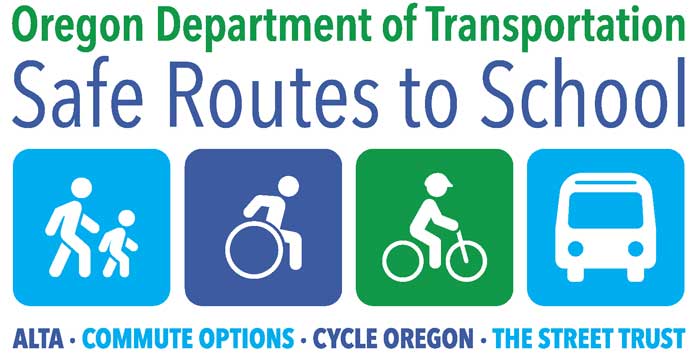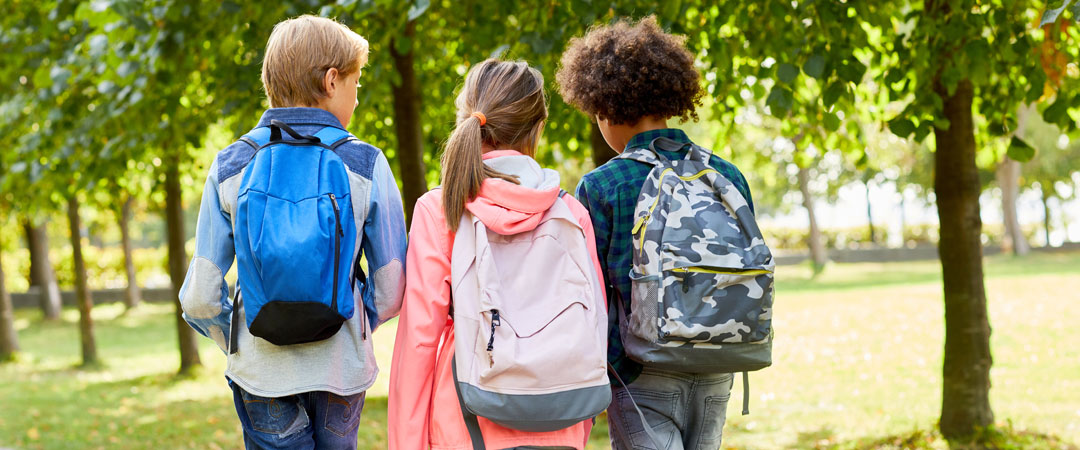Walk to School In Oregon
Tips for Safety and Fun
Consider these tips as you walk with your child or teach your child to walk to school:
-
- Obey all traffic signs and signals.
- Choose routes that provide space to walk and have the least amount of traffic and lowest speeds.
- Look for traffic at all driveways and intersections.
- If possible, cross at a crosswalk or at an intersection with a walk signal.
- Stop at the curb and look for traffic in all directions (left, right, left, to the front and behind). At an intersection, it is important to look in front and in back to check for turning vehicles. The second look to the left is to re-check for traffic that is closest to you.
- Wait until no traffic is coming and start crossing; keep looking for traffic as you cross the road.
- Walk across the road. Do not run.
- Wear reflective gear if it is dark or conditions limit visibility, such as rain or snow.
- Talk with your child about what you’re doing and why as you walk.
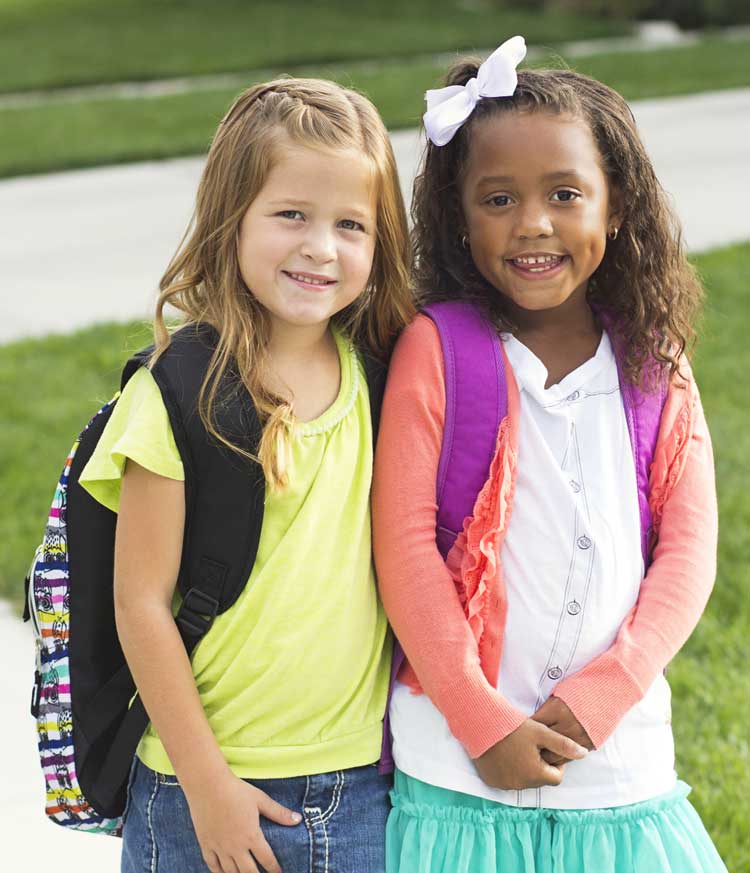
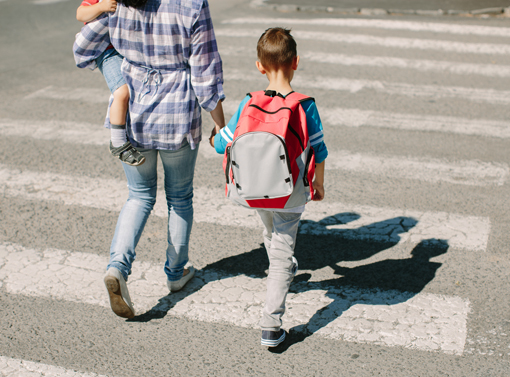
What can my child learn at different ages?
Children’s ability to understand and make decisions about where to walk and cross the street change as they grow and develop.
 Kids this age need to walk with adults who will make safety a priority because they are still learning what it means to be safe. The best way for them to learn safe walking skills is by walking with an adult.
Kids this age need to walk with adults who will make safety a priority because they are still learning what it means to be safe. The best way for them to learn safe walking skills is by walking with an adult.
Four to six year olds:
- Have limited judgment, making it hard for them to know where or when it is safe to cross the road.
- Cannot gauge the speed of oncoming traffic.
- Can be impulsive and lose concentration easily.
- Have a hard time staying focused on one task, such as crossing the road.
- Should walk together with an adult.
 These years are the time to teach skills that prepare children to be safe walkers throughout their lives. Children age seven to nine can begin to learn more complicated pedestrian safety tasks. Even though they are older, they always should be with an adult while walking near or around traffic. The best way for children to learn is by repeating safe pedestrian skills with an adult.
These years are the time to teach skills that prepare children to be safe walkers throughout their lives. Children age seven to nine can begin to learn more complicated pedestrian safety tasks. Even though they are older, they always should be with an adult while walking near or around traffic. The best way for children to learn is by repeating safe pedestrian skills with an adult.
Seven to nine year olds:
- Need supervision as they learn more complicated pedestrian safety skills.
- Can begin to identify safe crossing sites with help and practice.
- Can begin to learn how to identify traffic and stay focused while crossing the street with help and practice.
- Teach lifelong skills
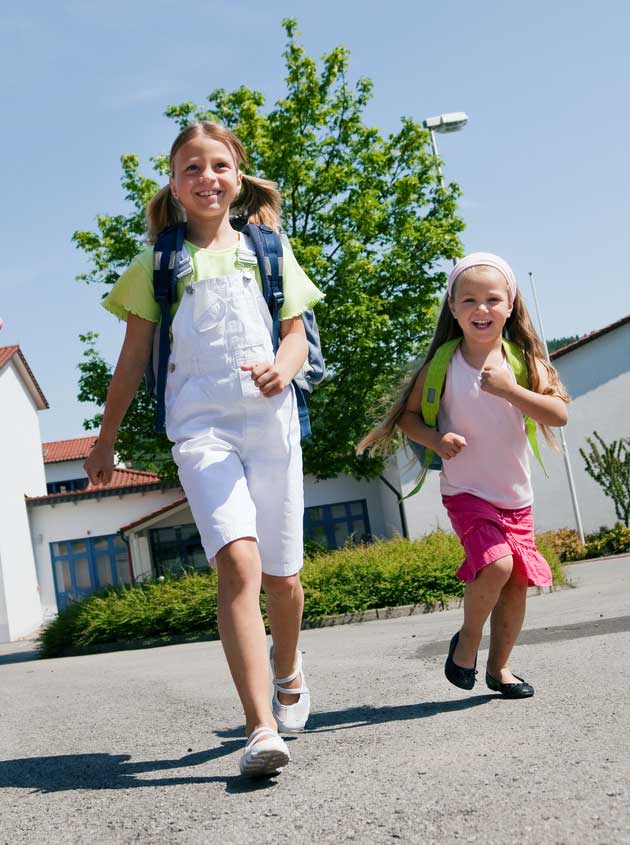
 Children age ten and older gradually can learn more complicated pedestrian safety tasks. Even though they are older, they should still be with an adult while walking near or around traffic until they consistently demonstrate safe pedestrian skills. The best way for children to learn is by practicing safe pedestrian skills with an adult. As children grow, revisit these safety issues often to make sure they are still practicing safe behavior.
Children age ten and older gradually can learn more complicated pedestrian safety tasks. Even though they are older, they should still be with an adult while walking near or around traffic until they consistently demonstrate safe pedestrian skills. The best way for children to learn is by practicing safe pedestrian skills with an adult. As children grow, revisit these safety issues often to make sure they are still practicing safe behavior.
Kids ten and older:
- Need specific instruction and modeling as they learn more complicated pedestrian safety skills.
- Can identify safe crossing sites with help and practice.
- With help and practice, can identify traffic and stay focused while crossing the street.
- Find a mix of independence and supervision
Bike to School in Oregon
Help your kids cycle safe
- Choose the right bike. Children should be able to sit on the bicycle seat, hands on the handlebars, and have the balls of their feet touch the ground. Don’t select a bike for your child to “grow into.”
- Always wear a properly fitted bicycle helmet. The helmet should sit on top of the head in a level position and not rock forward, backward, or side to side. The helmet straps should form a V under the ears, and should be snug but comfortable.
- Make sure your bike is ready to ride. Are the brakes working properly, the gears shifting smoothly, and the tires tightly secured and properly inflated?
- Wear neon, fluorescent, or other bright colors. It’s important to wear a bright shirt, jacket, or vest, even during daylight hours. Front white lights, rear red lights, and other light reflectors should be placed on the bicycle and worn by the cyclist.
- Use caution riding at dusk or after dark. Night riding requires skills and equipment that most children haven’t acquired. Be sure to talk with your child about being seen.
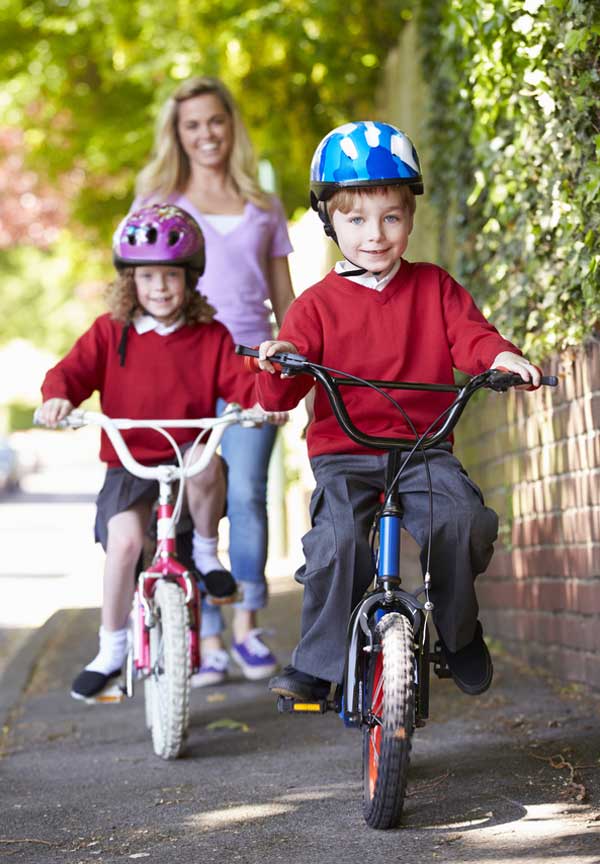
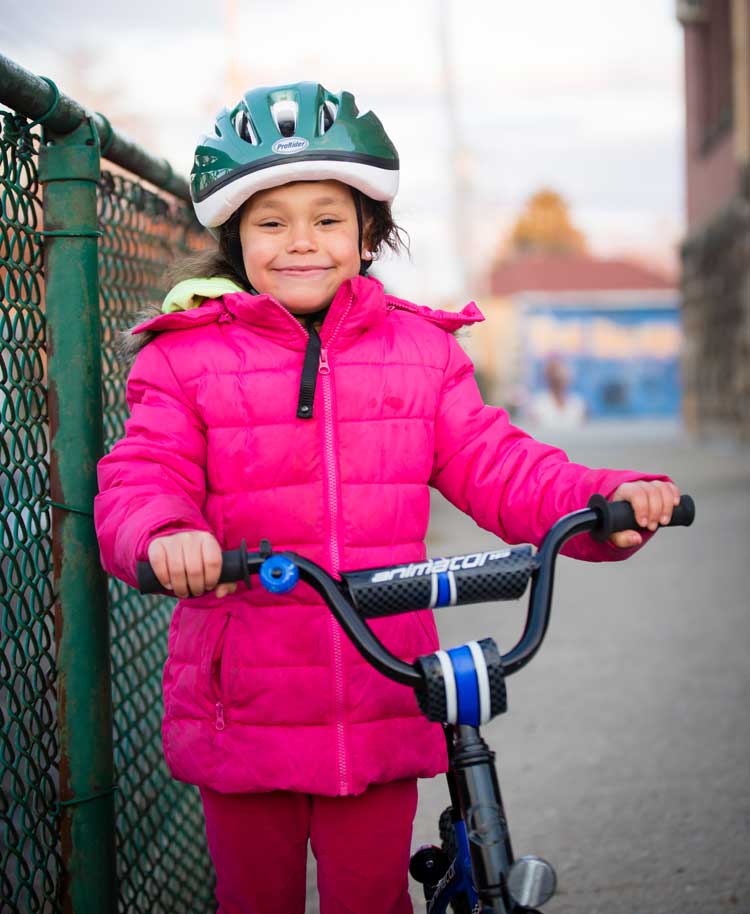
- Don’t wear headphones or listen to tunes while riding. People riding bikes need to be able to hear oncoming traffic and not be distracted by other sounds.
- Follow the rules of the road. Ride on the right side of roads, in the same direction as other vehicles. (Almost one fourth of bicycle-car collisions result from bicyclists riding against traffic.) Obey all traffic signs, signals, and lane markings. Use hand signals when turning.
- Be sure to check for drivers in parked cars. They may open their doors or pull out unexpectedly.
- Don’t wear long or loose clothing. It can get caught in bike chains or wheel spokes.
- Make eye contact with drivers. Be sure that they’re paying attention before crossing in front of them or pulling into their lane. Just because you can see a driver doesn’t mean they can see you.
